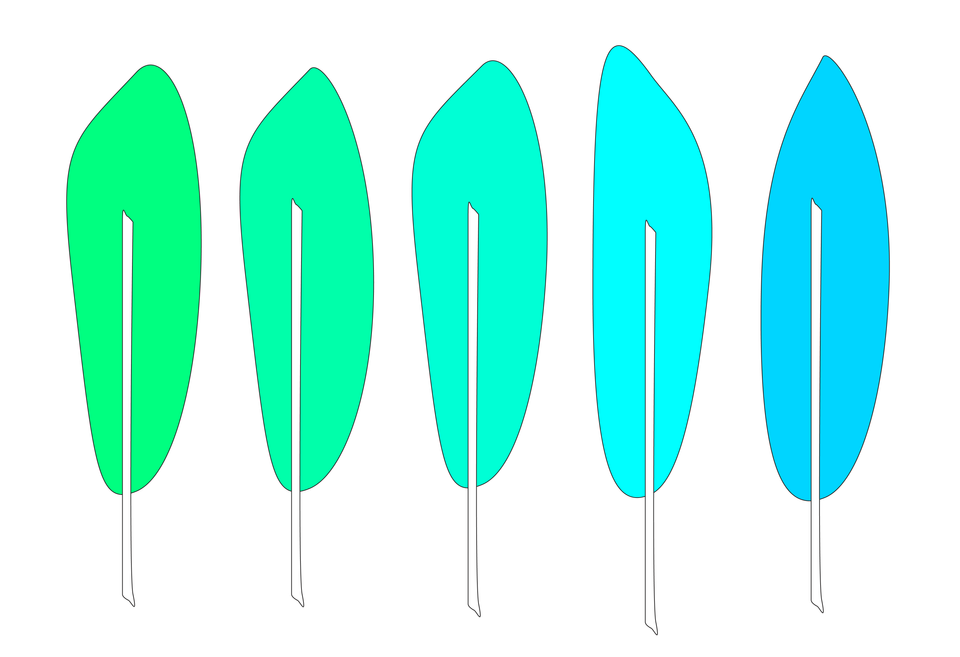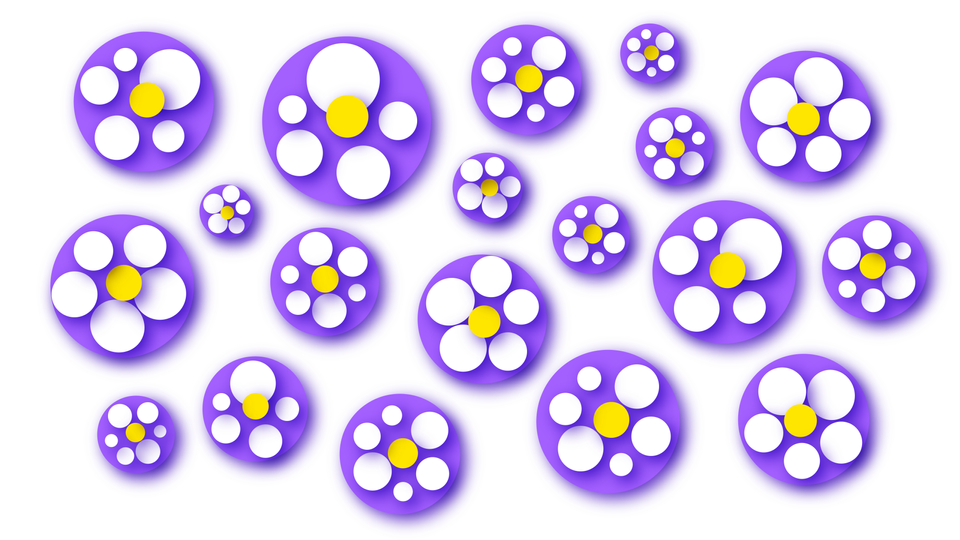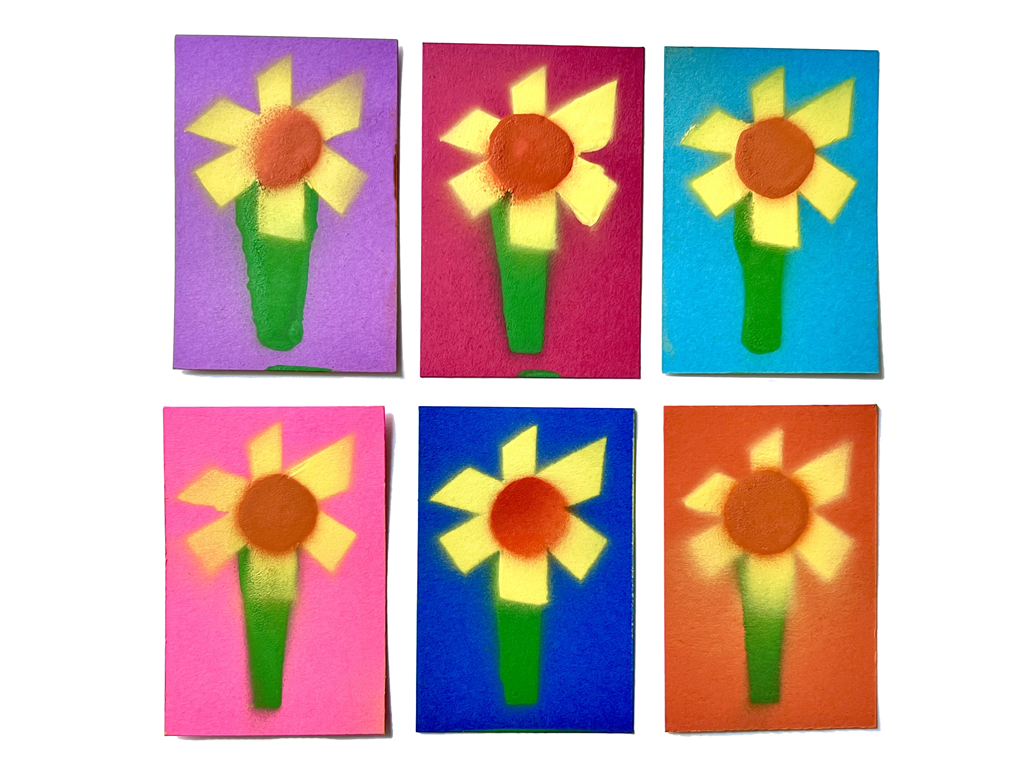Melancholic Witches & Blue Devils
How the color blue became associated with depression.

The story about the relationship between the color blue and depression begins with the persecution of women accused to be witches by the 17th century English Puritans.
(You may remember them from the newsletter titled the “17th century English Puritans were the original black sheep.”)
This story has everything:
- A debate about hot the devil really is,
- The game of “is she a witch or is she just melancholic?”
- Epic poetry by father of Ada Lovelace, Lord Byron
- The 19th century Temperance movement and the written word
- An easy last minute Halloween costume (hint: it's depression)
The Source of Imagination
But first, how do we have ideas? In the pre-modern world, ideas were perceived to be caused by external inspiration.
Divine Revelation / Inspiration
During religious history, there are two general ways that people describe revelation. Either the way that Moses saw a burning bush and the physically went to see God, or through dreams and prophecies, which all happen in the person’s mind.
(Gatekeepers would be able to declare if a work was created with divine inspiration or not, depending if they liked the content of the piece.)
The Muses
Similar to the divine inspiration of the Abrahamic religions, the Greeks had their own version, which lay in the Muses. The way you would have creative ideas would be because a muse of science or art “inspired” you.
“The Devil Made Me Do It”
Starting in medieval Europe, if inspiration for good actions came from god, inspiration for bad actions came from the devil. While “the devil made me do it” had actually been used as a legal defense, the concept of doing evil because of the devil has gone back centuries. There is a reason why the name for the apple is the genus of Malus, which means bad or evil.
Relation between the Devil and Depression
There is an entry in “A classical dictionary of the vulgar tongue” in 1785 that defines “blue devils” as “low spirits”.
Some of the earliest literary sources that I found that used “blue devil” were originally some Jonathan Swift / Gulliver’s Travels fan fiction in the form of a poem called “Lilliput” published in 1796 and also a play called “the Blue Devils” in the early 19th century, which was translated from French with a completely different name that didn’t mention the color blue at all.
But that still doesn’t explain where it came from.
The “Delirium Tremens”
Most online etymologists will say “The Blues? Oh that comes from the Blue devils? Oh, those are the shakes that one gets when they are going through alcohol withdrawal. It’s another name for ‘Delirium tremens’.” And self satisfied, they will return to whatever they do.
And in fact, if you do a bit of research, between 1830-ish and 1860-ish, there was a cornucopia of medical journals and satire articles alike that all spoke of the “blue devils” and their connection to alcohol and the Delirium tremens. Because, in fact, the term evolved to be referring to that.
At that same time, there was a group called the “teetotalers” hellbent on enforcing “temperance”, so the rise of calling alcohol the literal devil was not a huge jump.
To quote a snippet of one book:
“Poor drunkard! thine enemies even the “blue devils” themselves, pursue thee almost to death thou art the subject of a tormenting conscience. Look! here is our city of refuge; the gates stand wide open; flee into it and thou art safe! Thou art on a stormy ocean, ready every moment to be ingulfed in the great deep. See! here comes our lifeboat: step into it, and thou wilt land safely on the shore of abstinence. Drunkards! I am your friend, I am delighted to meet you, and I hope you will profit by my advice. Thousands, thousands of drunkards have already been saved: why not you? Do you doubt the efficacy of the system? Try it. You have tried drinking, perhaps for twenty years and you have felt its dreadful effects. Try abstinence as many months as I have tried it years; and if you suffer in your health or strength, in your pocket or conscience, if you sink in the estimation of yourselves, your wives, your children, or your employers send me an account of the loss, and I will pay the amount to the utmost farthing.”
But did “blue devils” originally refer to alcohol withdrawal? No.
How the devil, then, did they make the association?
Sober Illiteracy
Ada Lovelace's father, Lord Byron wrote an epic poem called “Don Juan” between 1819 and his death in 1824.
Ah ! who can tell? Or rather, who can not
Remember, without telling, passion's errors?
The drainer of oblivion, even the sot,
Hath got blue devils for his morning mirrors:
What though on Lethe's stream he seem to float,
He cannot sink his tremors or his terrors;
The ruby glass that shakes within his hand
Leaves a sad sediment of Time's worst sand.
Sober readers conflated the “blue devils” of his morning depression, with the glass of wine he had to calm the tremors in his hand. But this was not the only time Byron used the phrase “blue devils” in this very poem.
And hence high life is oft a dreary void,
A rack of pleasures, where we must invent
A something wherewithal to be annoy'd.
Bards may sing what they please about Content;
Contented, when translated, means but cloy'd;
And hence arise the woes of sentiment,
Blue devils, and blue-stockings, and romances
Reduced to practice, and perform’d like dances.
Since well before the 17th century, many people thought that hypochondrias was the cause of melancholy. Which is, by definition, a malady we invent. The "woes of ...blue devils" is referring to depression. Sure, the Lord may be hungover in the first one, but it’s still referring to melancholy, not the delirium tremens.
Is it melancholy, or is she a witch?
The origin of the phrase was actually regarding the persecution of witches in 17th century England, by our old friends, the Puritans.
In one early 17th century Latin literature about melancholia, Microcosmus Melancholicus Seu Tractatus, it talks about melancholy happening when impure “spirit animals” (animales spiritus) enter the body’s clear air, and the brain itself is bright, and somehow render them all opaque, dark, and cold, causing everything to become cloudy and dark.
But something interesting happens. Following the Puritans' rise to power, they began suspecting two different reasons for Melancholy. One was however they understood the concept of “biological” (having to do with spirit animals and cold, as seen above). The second had to do with witches and devils.
In Henry More’s “An Antidote Against Atheism” (1655, 1662), he introduces the incredible phrase of “Melancholy Phansie”. This was the first time I encountered the game of “is it a witch or is it just melancholy”. Apparently, they kept being confused if people were depressed or a witch.
Free Costume Idea
Depression is a really easy last minute Halloween costume if you need one. Just tell people that you are the 17th century English Puritan understanding of a witch.
Cold as the Devil
In the book, More debates whether bodies of devils are “warm” or “cold”, with the phrase “cold Devil” being used. He questions if devils are made from ice. They thought that a witch lied in her testimony about sleeping with the Devil by saying that his body was warm to confuse the issue, because she knew that that devils are cold.
The connection between the devil and cold continues over the next century.
- A 1677 book about “Supposed Witchcraft” relates a story from a physician about a young nobleman who was killed and stayed fresh for weeks, probably because of some sort of cold.
- A 1715 book about the “Complete History of Magick Sorcery, and Witchcraft” tells a story about a witch in 1682 named Susanna Edwards confessed of carnal knowledge with the Devil in the shape of a boy who was very Cold to her.
- In 1719, we read about trials of having people float in cold water or putting their hands in scalding water to see if they are witches.
I guess, because a witch with their cold devil would not sink or burn?
In some of these examples, there is someone who says “but normal people can also do that.” This is one of the many examples where Monty Python got it right in The Search for the Whole Grail.
The idea continues to spread, like whatever the cold version of wildfire is. Frostbite?
- By 1726, in “The Modern History of the Devil”, Daniel Defoe writes, “…if he ever committed a murder, [he] did it in cold blood, because nobody could ever prove he ever had any hot [blood].”
- Even in 1779, the Gentleman’s Magazine refers to the devil’s cold nature, and then says that a man went mad.
Blue Devils
By the time this phrase evolved to “blue devil”, it used the metaphor of “blue as cold”, which disconnected this from witches. This concept of melancholy being connected to cold continues to the 18th century, when following the rise of Devil literature, one would use the phrase “devil” constantly.
Which is how the “blue devil” becomes the shorthand for saying melancholy or depression.
General Decline of the Devil
After George Colman’s 1838, “Blue Devils: A Farce, in One Act”, people stopped writing about the devil.
Scary
If the Devil was an antagonist in 18th century literature, the 19th century saw the creation of human-centric monsters like Frankenstein and Dracula scaring people.
Spooky
By the end of the 19th century, the focus was on necromancy (in a manner of speaking) and the existence of ghosts. Thomas Edison built an “electric ghost machine” and Arthur Conan Doyle (creator of Sherlock Holmes) broke up a friendship with Harry Houdini over the latter’s disbelief in spiritualism. Mediums and readings became rampant, with highly educated and intelligent individuals believing in them.
Freaky
The 20th century saw rise of horror in cinema in the 20th century started with the film Freaks, about circus sideshow “freaks”. What the movie did show was their humanity.
Horrific
But the 20th century also was witness to some of the worst atrocities that the human could imagine. Evil was no longer only comprehensible within the context of the Devil. Humanity was capable of evil on its own.
Horror
Religious-related horror would become human-centric, like exorcisms and carrying the Devil’s baby. Concepts of the undead like zombies, and the eternal, like vampires, became mainstream.
Netflix
By the 21st century, witches and vampires were humanized, and the Devil would be depicted by an extremely handsome British gentleman who showed how the he has been historically misunderstood.
Feeling Blue Devils
By the time people stopped using the language of the "Devil", they had already associated the concept of "blue" with depression, and rationalized the association.
This is nothing new. The association of color and mood is millennia old. For example, the word melancholy literally means "black bile". We've already seen that Lucifer (one of the names of the Devil) actually means "carrier of light".
Sober thoughts
Whitewash
The etymology of "blue as depression" was one of the first topics I had researched related to color last year. It just happened to be that I kept discovering historical persecutions related to the color blue. I was fascinated by the fact that in every single case of researching etymologies, someone had declared incorrect something at some point in time, and like that, whitewashed its history.
"Blue laws" were because they were written on blue paper, not because they were bloody. The mis-identification of "blue bloods" with the Spanish and the limpieza de sangre, purity of blood laws, completely misunderstood what "purity of blood" entailed.
The Other
It is quite easy to laugh about how this phrase evolved over the past 350 years. But it began with the persecution of the other, of the misunderstood, of the outsider.
We now understand much more about how the brain works, yet there is still a stigma associated with mental health. The impossible question of "was the devil warm or cold?", in which there was no correct answer, reminds me of how many neuroatypical individuals are constantly forced to play games which don't make sense to them.
It's known to cause depression.




